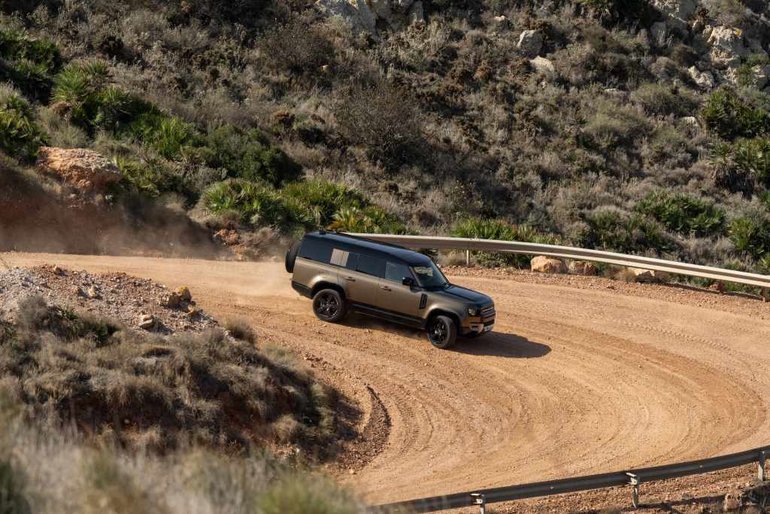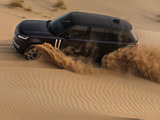Five Technologies That Make Range Rover and Land Rover Vehicles So Capable in Off-Road Driving
September 12 2024,

Land Rover and Range Rover vehicles have long been synonymous with off-road excellence, combining luxury with some of the most advanced all-terrain capabilities available in any SUV. While these vehicles are often seen cruising down city streets, they are engineered to tackle the most challenging environments—from rocky trails and deep mud to steep inclines and water crossings. What sets them apart are the sophisticated technologies that enhance their off-road performance. Here are five key technologies that make Range Rover and Land Rover vehicles so capable when the pavement ends.
1. Terrain Response and Terrain Response 2
One of the standout features that define the off-road prowess of Range Rover and Land Rover vehicles is the Terrain Response system. This technology allows the driver to adapt the vehicle’s settings to suit various types of terrain, optimizing performance and safety. With the push of a button, Terrain Response adjusts the engine, transmission, suspension, and traction settings to match the conditions.
Terrain Response 2, an advanced version of the original system, goes a step further by offering an automatic mode that intelligently senses the terrain and adjusts the settings accordingly. This means that whether you’re driving on gravel, sand, mud, or snow, the vehicle will automatically configure itself to maintain optimal traction and control. This technology ensures that even novice off-road drivers can tackle challenging conditions with confidence, making the vehicle's off-road capabilities accessible to everyone.
2. All-Terrain Progress Control (ATPC)
All-Terrain Progress Control (ATPC) is another innovative technology that enhances the off-road capability of Land Rover and Range Rover models. Think of ATPC as a low-speed cruise control for off-road driving. It allows the driver to set a desired speed (between 1.8 km/h and 30 km/h) while the system takes care of maintaining that speed over difficult terrain, such as rocky trails, sand dunes, or muddy paths.
ATPC controls the throttle and brakes independently, ensuring smooth and steady progress even in challenging conditions. This allows the driver to focus solely on steering the vehicle, making it easier to navigate through obstacles without the need to constantly manage speed. ATPC is particularly beneficial when traversing steep inclines, loose surfaces, or wading through water, providing consistent momentum where precision and control are crucial.
3. Adaptive Dynamics and Electronic Air Suspension
Land Rover and Range Rover vehicles are equipped with advanced suspension systems that contribute significantly to their off-road capabilities. Adaptive Dynamics uses continuously variable dampers to adjust the suspension settings in real time, based on driving conditions and input from the driver. This system helps to maintain vehicle stability and comfort, whether on rough terrain or smooth highways.
Electronic Air Suspension further enhances off-road performance by allowing the driver to adjust the vehicle’s ride height. When navigating off-road, the suspension can be raised to increase ground clearance, allowing the vehicle to clear obstacles such as rocks, roots, and deep ruts without getting stuck or damaged. This increased ground clearance also improves the vehicle’s approach, departure, and breakover angles, which are critical for tackling steep slopes and uneven terrain.
Additionally, the air suspension system automatically lowers the vehicle when parked or at highway speeds, improving aerodynamics and making entry and exit easier for passengers. This dual functionality of optimizing both off-road capability and on-road comfort is what sets Land Rover’s suspension system apart from traditional setups.
4. ClearSight Ground View
ClearSight Ground View is a cutting-edge feature that exemplifies Land Rover’s commitment to enhancing off-road driving visibility. Using a combination of cameras mounted on the front grille and under the vehicle, this technology provides a virtual 180-degree view of the ground directly beneath the front of the vehicle—essentially allowing the driver to "see through" the hood.
This real-time feed is displayed on the infotainment screen, helping drivers navigate tricky terrain by showing hidden obstacles, such as rocks, deep ruts, or tree roots, that might otherwise be obscured from view. ClearSight Ground View is especially useful when driving on narrow trails, navigating around obstacles, or positioning the vehicle with precision during challenging off-road maneuvers.
This technology not only improves off-road safety but also gives drivers more confidence to tackle rough terrain, knowing that they have a clear view of what lies directly under their vehicle.
5. Wade Sensing Technology
Water crossings are some of the most daunting off-road challenges, but Land Rover and Range Rover vehicles are specifically engineered to handle them with ease, thanks in part to Wade Sensing Technology. This system uses sensors mounted on the side mirrors to measure the depth of water around the vehicle in real time, displaying the information on the central touchscreen.
Each model has a specific wading depth capability, ranging from about 500 mm in some of the smaller models to an impressive 900 mm in larger, more rugged vehicles like the Range Rover. Wade Sensing Technology helps drivers avoid exceeding the safe wading depth, reducing the risk of water entering critical components.
This technology is invaluable for navigating flooded roads, streams, or other water obstacles, ensuring that drivers are aware of the limits of their vehicle and can proceed safely without fear of damaging the engine or electronics.
Conclusion
The off-road capabilities of Range Rover and Land Rover vehicles are rooted in a combination of advanced technologies that work together to make them some of the most capable SUVs on the market. From adaptive suspension systems to intelligent terrain management, these vehicles are designed to tackle virtually any environment, offering a blend of comfort, control, and confidence.
Whether you’re exploring off-the-beaten-path trails, wading through water, or simply navigating snow-covered roads, these technologies ensure that your Range Rover or Land Rover is up to the task. While their luxury interiors and sleek designs might suggest otherwise, these vehicles are built to go far beyond the pavement, providing the perfect combination of adventure and refinement.





